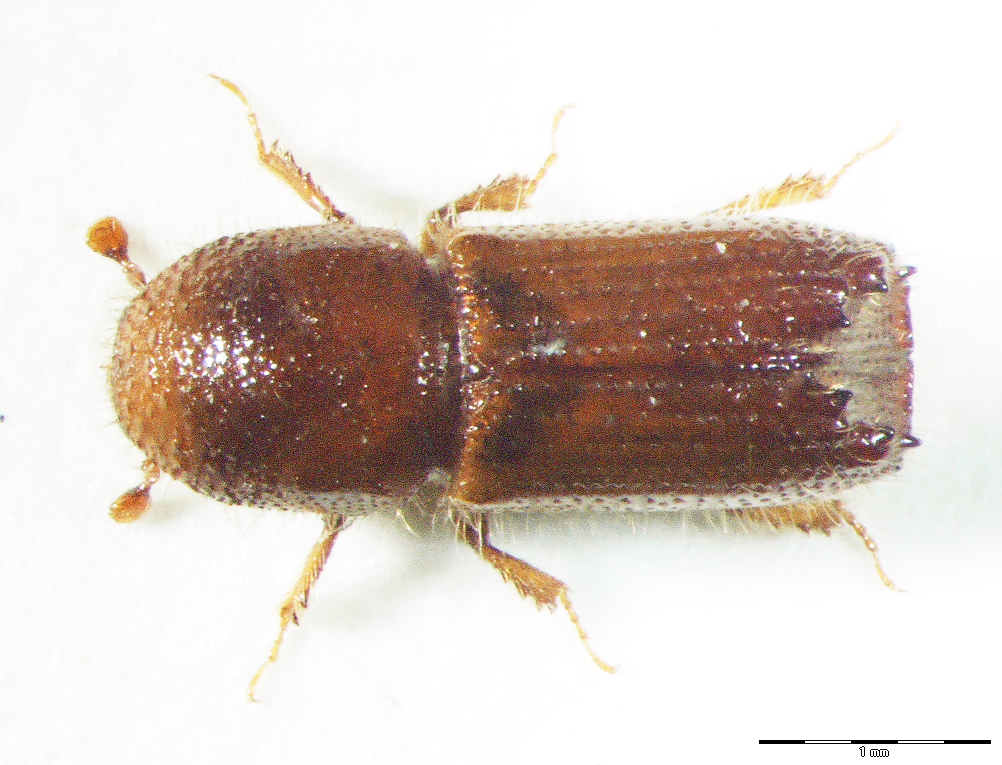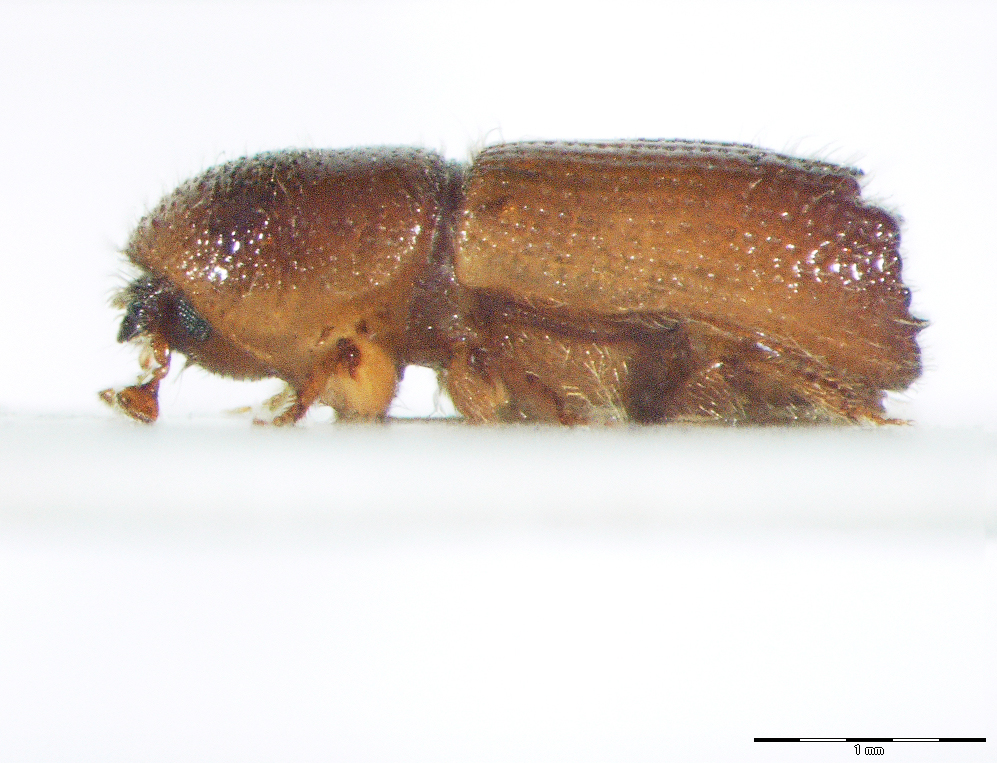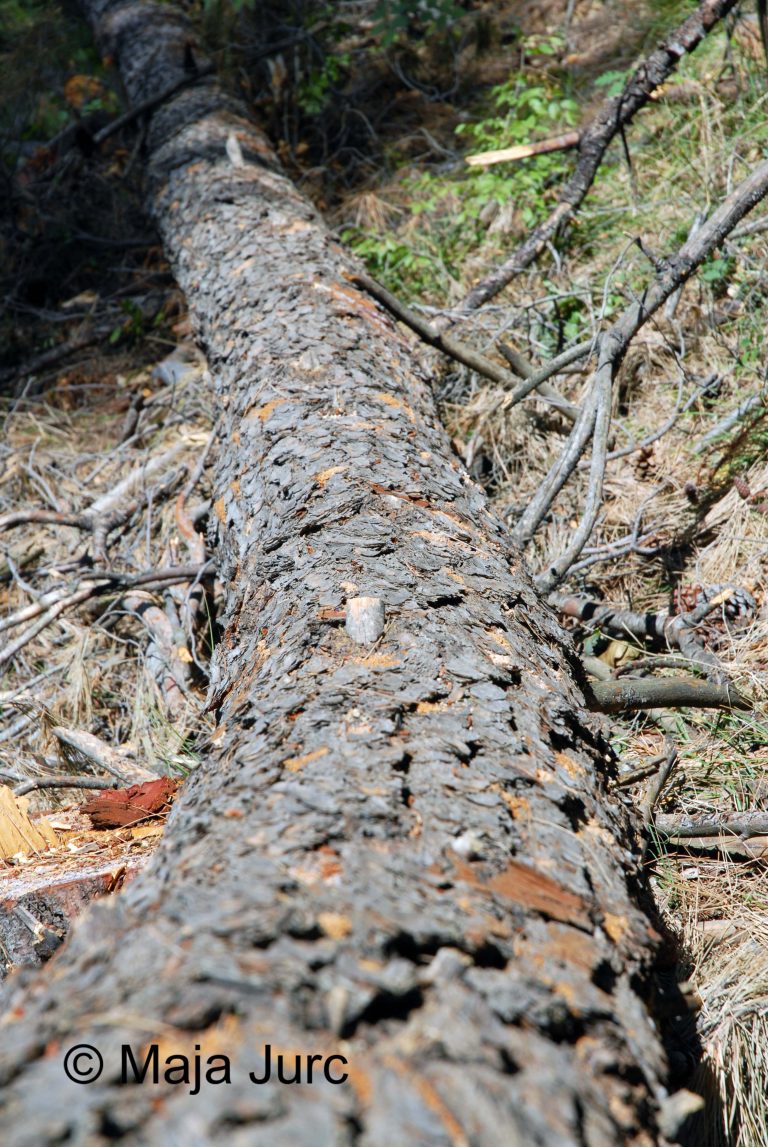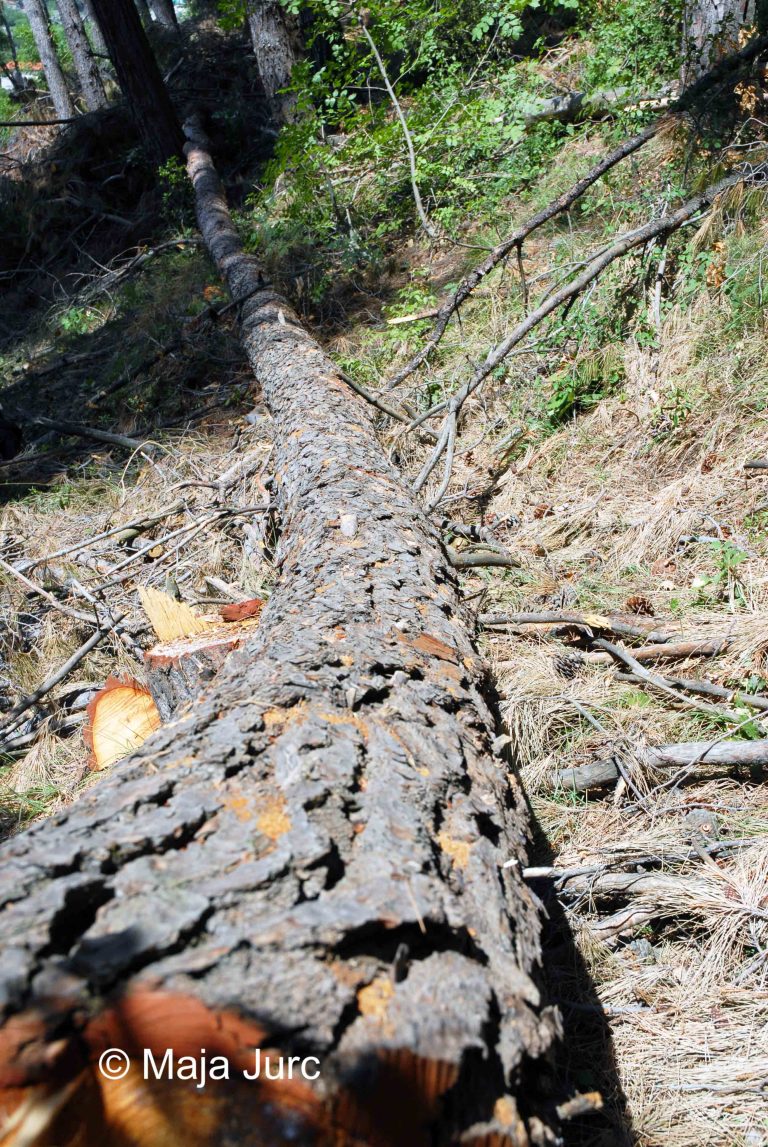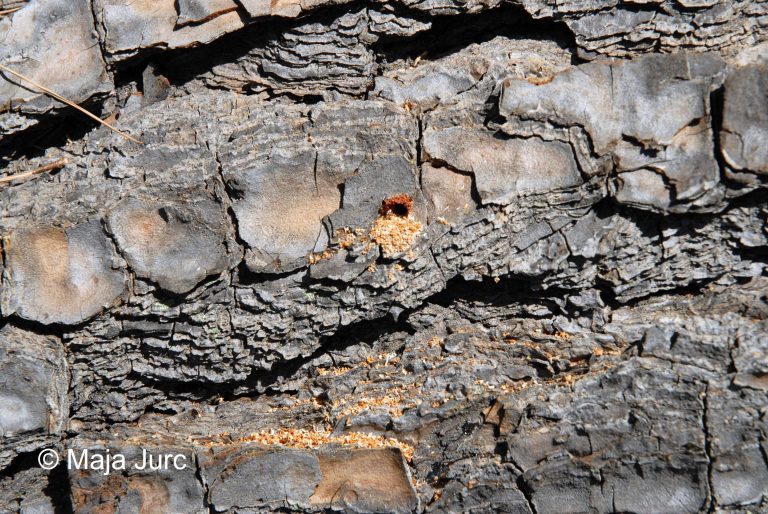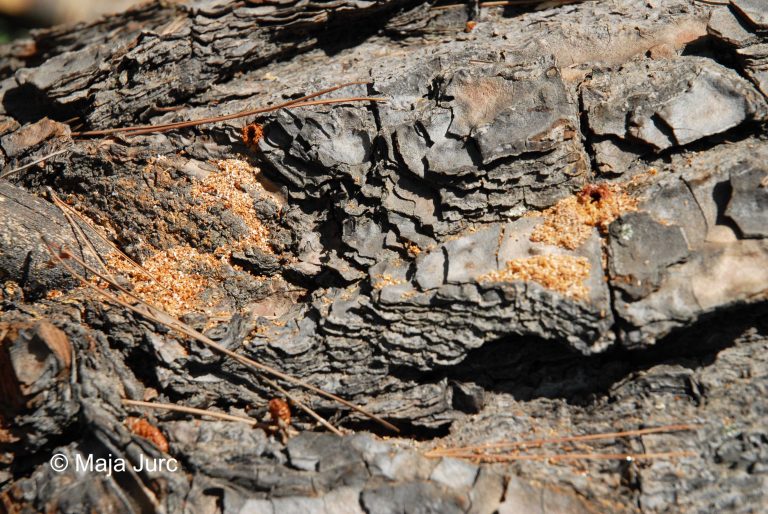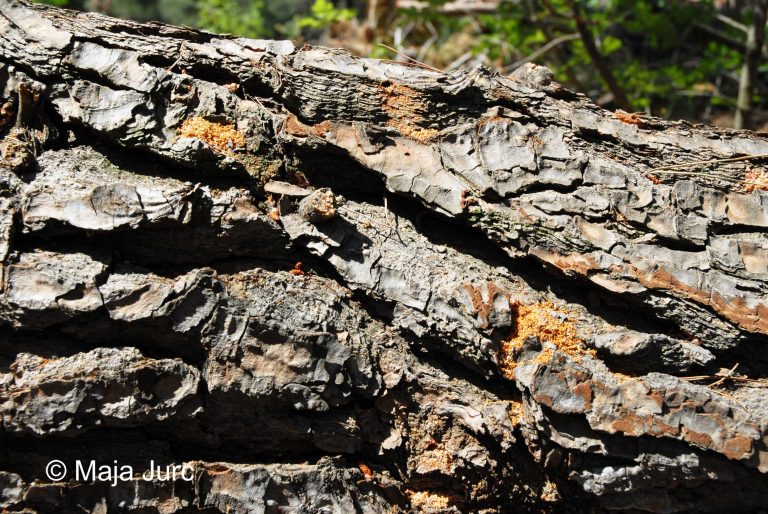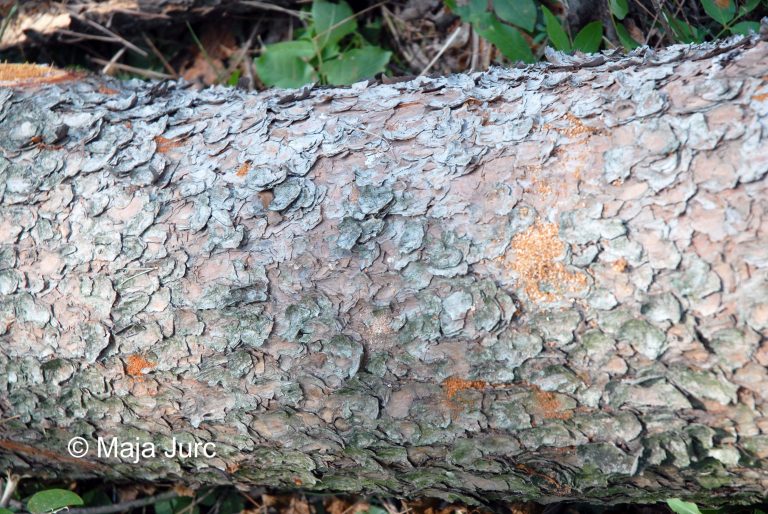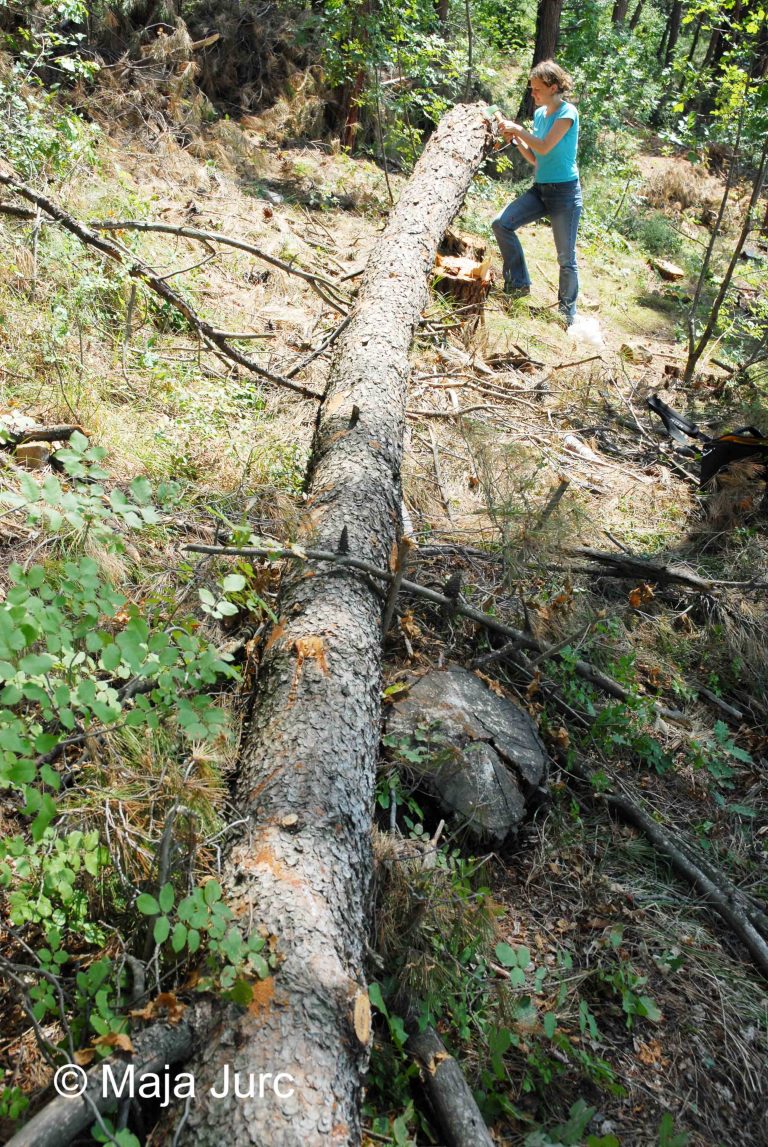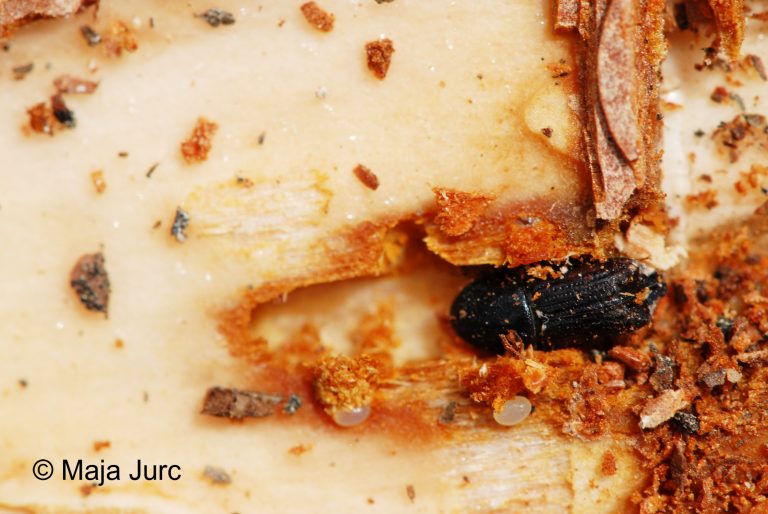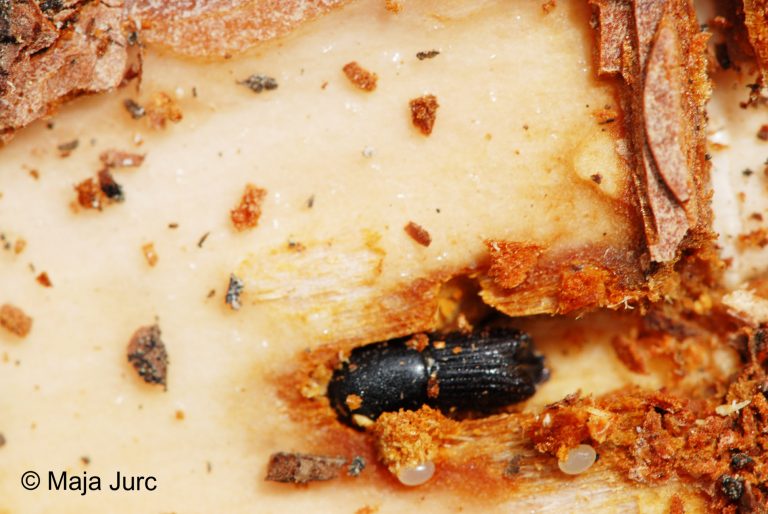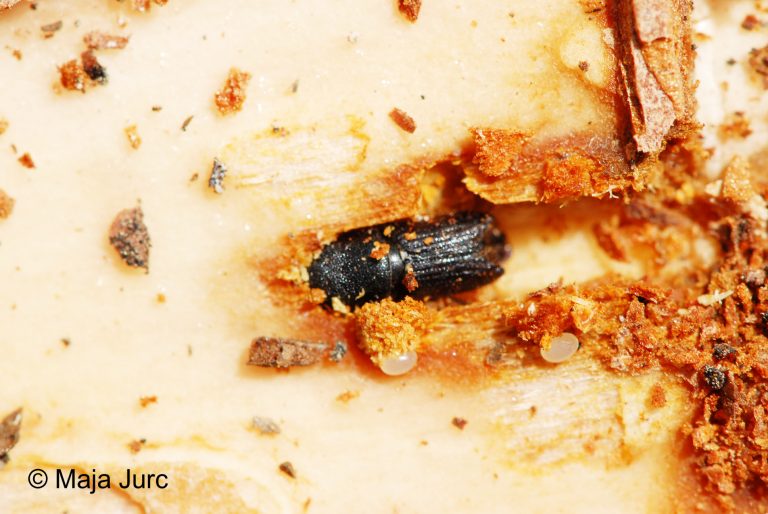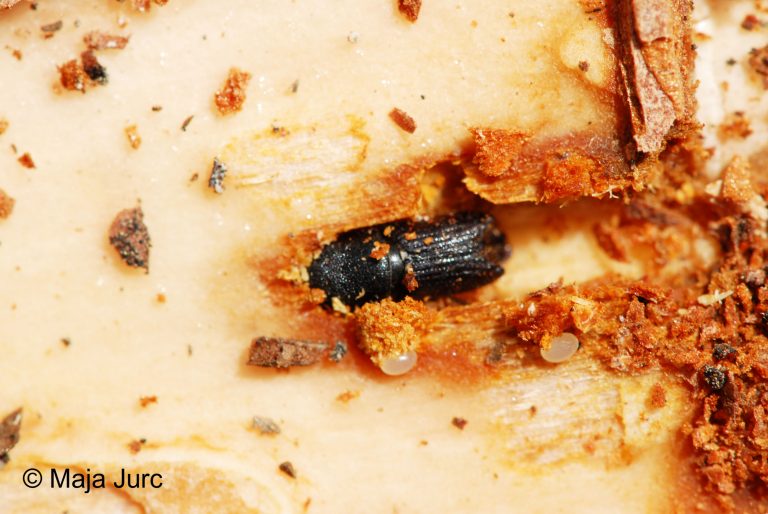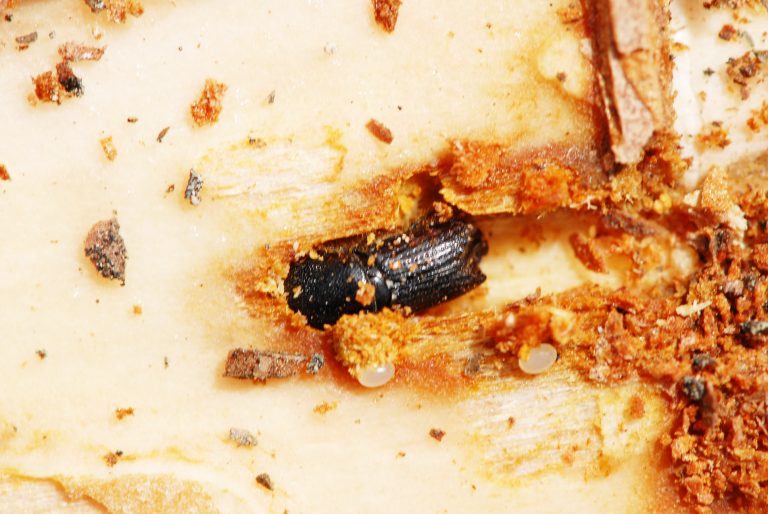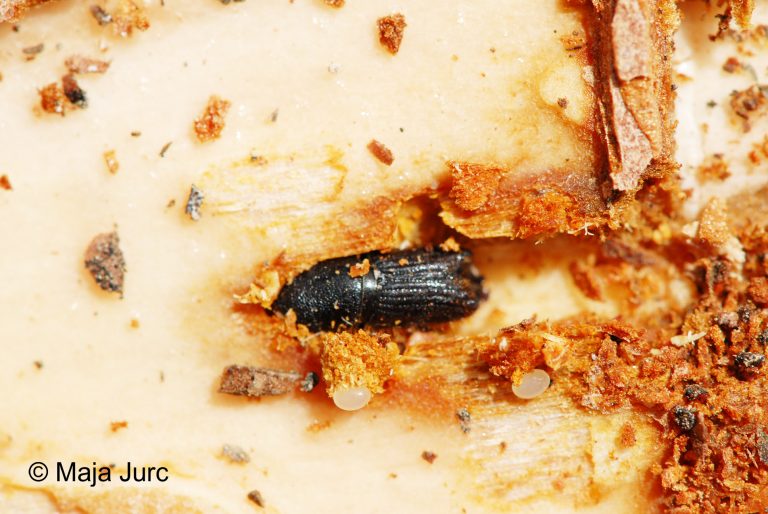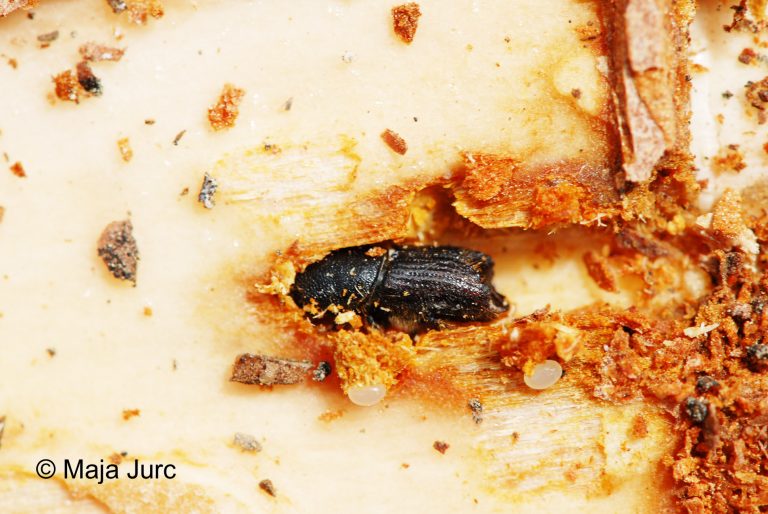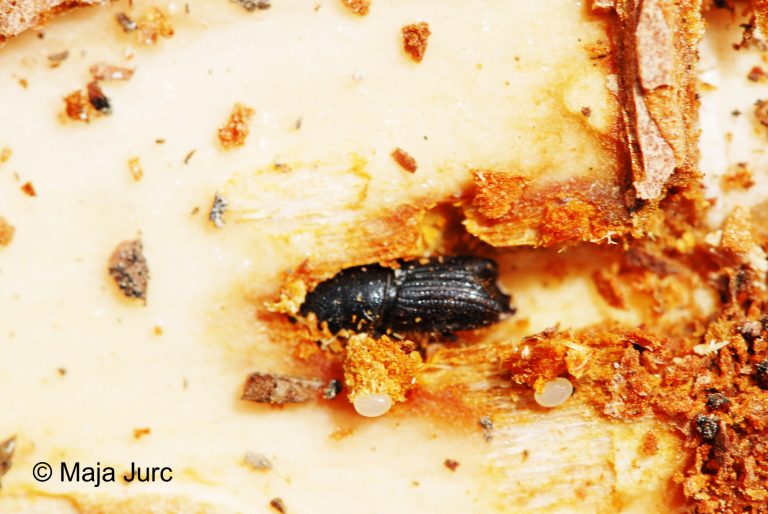29.02. Orthotomicus laricis (Fabricius, 1792)
Presence
E: AU BE BH BU BY CR CT CZ DE EN FI FR GB GE GR HU IR IT LA LS LT LU MC MD NL NR NT PL PT RO SK SL SP ST SV SZ UK YU
N: AG MO
A: ES FE HEB HEI JA KZ MG NC SC SHA SHX TR WS
Figure 125: Orthotomicus laricis, dorsal, lateral (Photo: Maja Jurc)
Older catalogs and keys – citations of name
Siegel 1866: Bostrychus Laricis Fab.; Grüne 1979: Orthotomicus laricis (Fabricius, 1792); Freude, Harde, Lohse 1981: Orthotomicus laricis Fabricius; Titovšek 1988: Orthotomicus laricis (Fabricius); Pfeffer & Knížek 1993: Orthotomicus laricis (Fabricius, 1792); Pfeffer 1995: O. laricis (Fabricius, 1792).
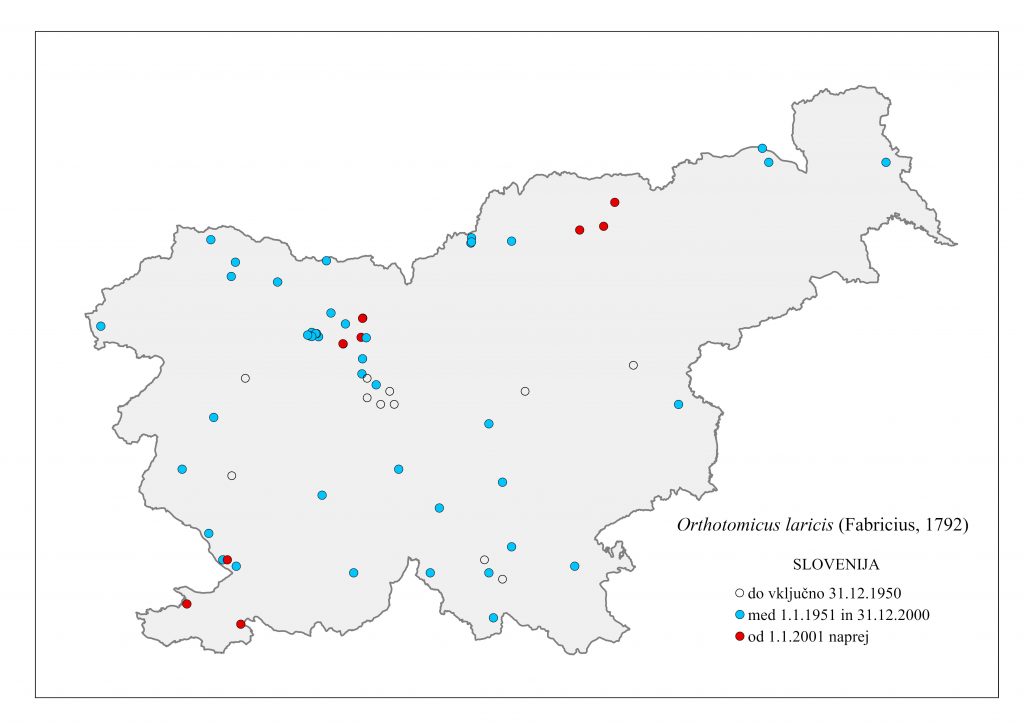
Figure 126: Orthotomicus laricis, distribution map according to hostorical and recent data
Ecology and presence in Slovenia
The species is widespread in Europe, the Caucasus, Asia Minor, Siberia, Korea, Japan and North Africa. Siegel (1866) states that the species was “common in Carniola, under pine and larch bark”. In Slovenia, the species is very common, being widespread in all Slovene regions (Fugure 126), hosts being Pinus cembra, P. mugo, P. densiflora, P. koraiensis, P. nigra, P. sibirica, P. strobus and Pinus sylvestris, and more rarely also P. halepensis, Larix decidua, L. gmelinii, L. sibirica, Abies alba, Picea abies, P. jezoensis, P. obovata and P. orientalis. In Slovenia, the hosts are P. abies, P. sylvestris, P. nigra and L. decidua. Polygamum, develops two generations per year, swarming in May and August. It mainly inhabits the thick-trunked parts of trees. The tunnel system is in the form of an irregular spatial galleries, from which the sinuous larval galleries later emerge. Length (adultus) is 3.3-3.8 mm. The apex is very steep, almost round in the male. Sexual dimorphism is well marked, the denticles being stronger in the male than in the female (Figure 125). Polygamous. Saproxylic species, not of major economic importance due to its distinctly secondary character.

